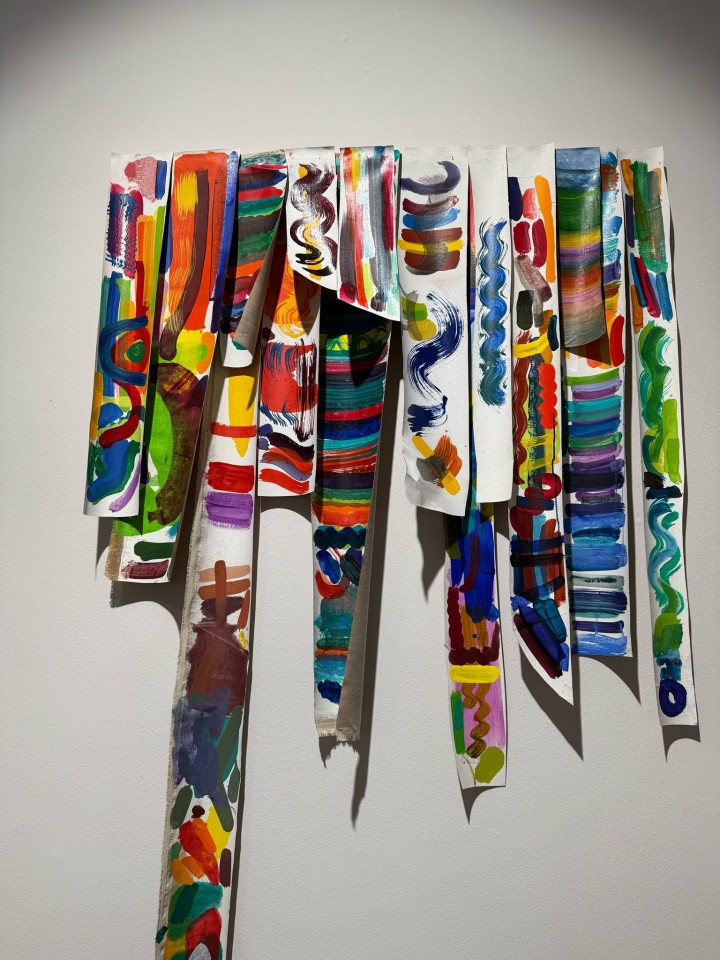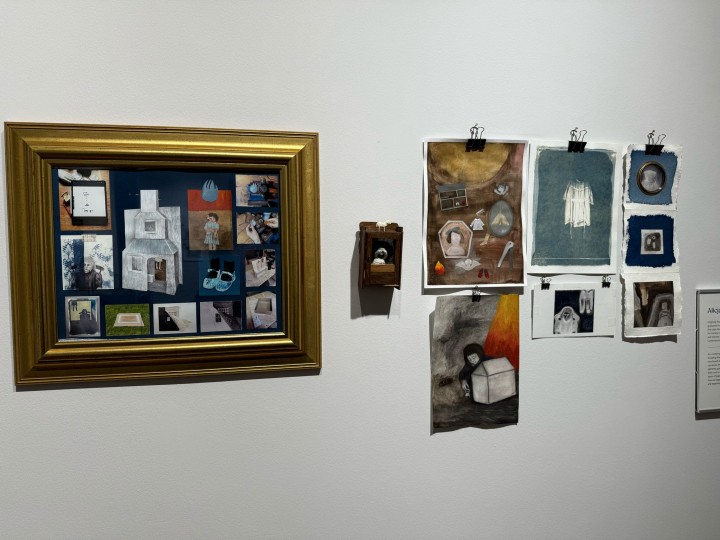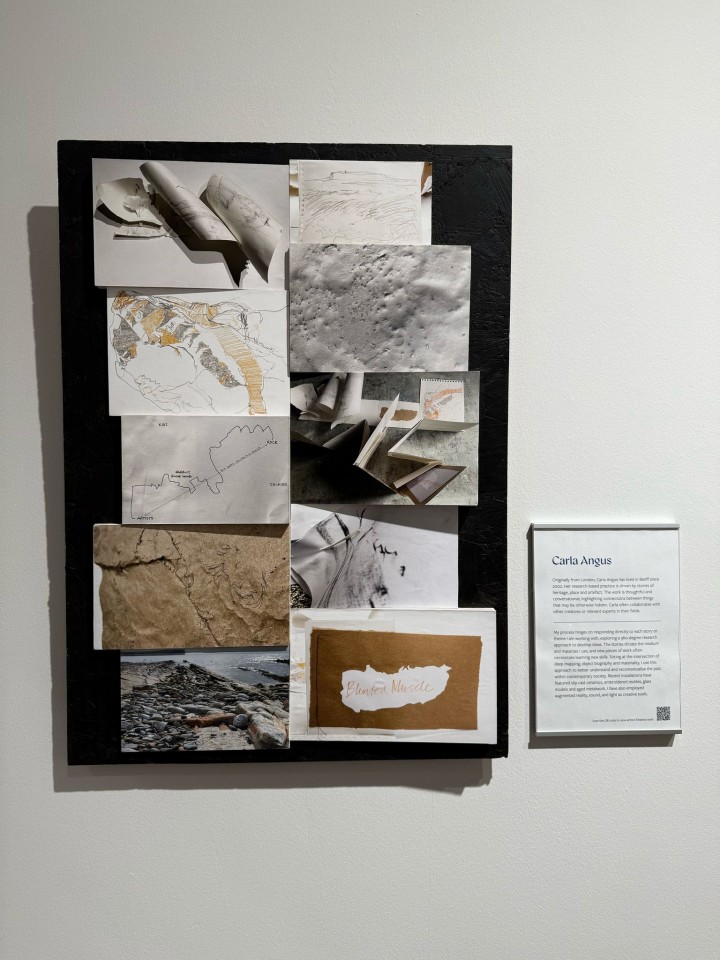Scottish Art News
Latest news
Magazine
News & Press
Publications
Process, Process, Process
By Lena Kammerer, 29.04.2025

Tucked into a modest groundfloor space within Aberdeen Art Gallery, Process, Process, Process offers a refreshing departure from the conventional exhibition format. Rather than showcasing finished artworks, this exhibition delves into the often invisible labour, tools, and inspirations that underpin artistic practice. Organised in association with the Aberdeen Artists Society, the display offers a behind-the-scenes glimpse into the creative worlds of its participating artists.
A variety of contributors are represented here, with works and objects arranged across four surrounding walls and three central glass cases. The result is an intimate, almost workshop-like atmosphere. Instead of neatly framed artworks, visitors encounter test paint strips, practical tools such as scissors and hammers, lithographs, and even the powdery residue left behind from carving into a lino block. These fragments, usually discarded or hidden, take on a curious beauty of their own. In some cases, they begin to resemble standalone pieces — especially the paint swatches and hand- drawn sketches, whose unpolished immediacy feels striking.
 Process, Process, Process. Exhibition install image.
Process, Process, Process. Exhibition install image.
One of the more interactive elements of the exhibition is a screen that loops through short video clips. Some show the artists in the midst of making, while others cycle quickly through images - more akin to social media reels than documentary footage. While this adds energy to the space, the pace can feel rushed, giving little time for deeper engagement.
Biographical panels and first-person reflections from the artists add welcome context, offering candid insights into sources of inspiration and day-to-day studio life. QR codes dotted around the exhibition invite visitors to learn more about the finished works - absent from the space - reinforcing the curatorial intent to keep the process, rather than the product, in the spotlight.
 Process, Process, Process. Exhibition install image.
Process, Process, Process. Exhibition install image.
Though compact in scale, Process, Process, Process offers a thoughtful, quietly revelatory meditation on creativity. It invites viewers to slow down and reconsider the overlooked stages of making - the mess, the experimentation, the trial and error - and, in doing so, renders the invisible both visible and compelling.




